For January I am drawing Red Alder and Pacific Wren. Red Alder has a unique red bark, but in winter it often covered in lichen and can be mistaken for birch trees. The leaves of Red Alder are very healthy for the forest floor and enrich the soil in nitrogen. I have a few of these trees in my yard, and a week ago I tried cleaning up some of the leaves next to my garage and found a juvenile newt. I quickly covered him up and decided to leave the leaves alone till spring. Red Alder branches break off and fall all over my yard, and can be quite beautiful with its small dark cones. I chose to couple the Red Alder branch with a baby Pacific wren, its a small chubby little bird with a beautiful long song. I love seeing and hearing them around my house.
|
I have been drawing PNW flora and fauna for awhile, focusing on flowers, shrubs and berry bushes and moths or butterflies. This year I want to focus on drawing native trees of the PNW, especially in the coastal region. For each month of the year I plan to draw a tree that is striking for that time of the year, and also represent a bird, butterfly or moth that depends on that tree.I wanted a seasonal year round project that I could build on throughout the year and work with the changing seasons. I will take inspiration from working in my yard, walking in the neigbourhood or hiking the trails.
For January I am drawing Red Alder and Pacific Wren. Red Alder has a unique red bark, but in winter it often covered in lichen and can be mistaken for birch trees. The leaves of Red Alder are very healthy for the forest floor and enrich the soil in nitrogen. I have a few of these trees in my yard, and a week ago I tried cleaning up some of the leaves next to my garage and found a juvenile newt. I quickly covered him up and decided to leave the leaves alone till spring. Red Alder branches break off and fall all over my yard, and can be quite beautiful with its small dark cones. I chose to couple the Red Alder branch with a baby Pacific wren, its a small chubby little bird with a beautiful long song. I love seeing and hearing them around my house. OBA: As a child, you went mushroom hunting with your grandparents in Poland. And you have lovely mushroom drawings on your website. Do you also cook with mushrooms? Do you have a favorite mushroom recipe?
Dorota: Mushrooms are my favorite subject to draw and to cook with. Also, mushroom hunting is a great way to be outdoors and observe nature. In the Pacific Northwest, I see some of the similar species that grew in Poland such as King Boletes and other Boletes, Amanitas, Chanterelles, Oyster Mushrooms and Milk Caps. Other species only found here and not in Poland are Lobster Mushroom, Chicken of the Woods, Coral Mushrooms and Cauliflower mushroom to name a few. My favorite mushrooms to cook with are Chanterelles (which I don’t have luck finding, so I buy them at the farmers’ market), Oyster mushrooms, Cauliflower mushrooms, and Bolete mushrooms, which I have luck finding on the coast. My favorite way to cook mushrooms is with butter, leeks, garlic, salt, and chopped parsley. You can make plain white mushrooms taste amazing with that combo as well. OBA: You have illustrated many native plants of the Pacific Northwest, including a series for the Columbia Memorial Hospital in Seaside, Oregon. Have you illustrated native plants of Poland? If so, what were some of your favorites? Dorota: I love illustrating plants from my parents’ garden when I visit Poland in the summer. Some of my favorite subjects are berries such as gooseberries, black and red currants and fruit such as peaches, pears, apples, etc. I have started several flower projects while being in Poland and finished painting them while back in Oregon. Some my favorite flowers from Poland are Lilac, Lilies, Daylillies and Poppies. Several years ago, while hiking in Tatra mountains, I discovered that there are over 40 varieties of native orchids growing in Poland, many of them endemic to the Tatra mountains. I did many sketches in my sketchbook that year, and one day my dream is to go back to Tatra mountains and spend more time creating more detailed illustrations of the native orchids. Poland is not very well known for its orchids, and I think that would be a great project for me and a way to showcase such unique plants from Poland. I also like portraying butterflies and moths, and my favorite butterfly from Poland that I love depicting is a Peacock butterfly. OBA: In 2019, you completed the diploma for the Society of Botanical Artists in London, England. How was it taking a correspondence course as opposed to in-person learning? Do you have any tips for someone who wants to apply and take the UK diploma? Dorota: Correspondence course was great for me. In Oregon, there are not a lot of in-person opportunities for this kind of learning or programs. You are definitely on your own and need tons of self-discipline as the course requires a huge time commitment. There aren’t any video tutorials associated with the course so a lot of learning happened by reading books, sketching, drawing, researching and hours of practice. You need a little bit of background in your media (colored pencils or watercolor) before you begin the course -- it’s definitely not for beginners. The course was challenging, and with its deadlines, a bit stressful. There was no time for personal projects, just barely enough time for the assignments. The varied scope of the assignments helps to stretch your skills and abilities, teaches you to work under pressure, forces you to tackle different plant subjects, provides an opportunity to learn basic botany, and a chance to build a comprehensive portfolio. It was totally worth the time commitment. OBA: You have created beautiful botanical art in graphite, pen & ink, colored pencil, and watercolor. What is your favorite medium? Dorota: I love all the media mentioned. I have completed my diploma in colored pencils. I also love watercolor and pen and ink. In my sketchbooks, I use predominantly pen and ink and add color with either colored pencils or watercolor. Drawing is more physical in a way, and I think my first love is drawing. Drawing is also more versatile on the go. When I have few minutes here and there (when traveling or on a break at work), it’s much easier to work in a sketchbook with a pen and colored pencils. Also when I have shorter amounts of time in my studio, colored pencils are my preferred media. There is no color mixing or waiting for washes to dry. The flow is very different while working in colored pencils or watercolor for me. I choose watercolors when I have bigger chunks of time available to paint. OBA: How do you keep up your practice of daily sketching and botanical art during the fall and winter seasons when blossoms and pollinators are dormant? Dorota: Actually, fall and winter are my favorite seasons as there is no shortage of fall leaves, mushrooms, seedpods, and cones. I never tire of these subjects, and since the weather keeps me indoors more, I tend to be more productive in the fall and winter. I work from seasonal subjects as much as possible, but fall and winter also offers time to finish some of the summer projects as well, and time to add pollinators to the drawings or paintings working from preserved specimens. I also do more botanical teaching in the fall and winter. This coming fall I will be teaching an online, 8-week-long workshop through Oregon Society of Artists titled, "Fall Botanical Wonders," (Sept. 25- Nov.20). Also, I'm teaching an in-person, one-day workshop on September 11 at OSA. Fall and winter are a great time to connect with other botanical artists. I draw or paint daily, and my preferred time to draw or paint is at night. Since daylight is not abundant at this time of the year, I am naturally drawn to my studio daily. OBA: Do you have anything else you’d like to tell us about? What are you currently working on? Dorota: I have several project started right now in the studio. I am painting Sweet Peas, finishing an heirloom tomato for OBA’s "Red-ibles" group project, starting a drawing of a Blanket Flower (Gaillardia) that will feature a Peacock butterfly, and continuing a drawing of a Japanese Corkscrew Larch from my parents' garden. The larch drawing is part of an ongoing project of illustrating various cones and branches of evergreen trees. There is never a shortage of inspiration for me, and I find both the practice of botanical drawing and painting, as well as belonging to organizations such as OBA and the opportunity to share my love of plants with others, a life-changing experience. Just a few images of the flowers from my parents' garden. It was a wonderful visit and the flowers represent the joy and happiness of seeing family after a 3 year pandemic disruption of visits.
I am super excited to have my painting Luscious Legacy, depicting a Stargazer Lily selected for a juried international show titled Gifts from Japan. The exhibit is taking place at the Japanese Garden in Portland Oregon and is organized by Huntington Gardens and Library. The show will be between May 14th-July 4th, 2022. The show features contemporary botanical paintings and drawings depicting plants of Japanese origin. The artists participating in this exhibit are from Japan and the USA. Some are members of Northern California Society of Botanical Artists, Oregon Botanical Artists and Botanical Artists Guild of Southern California. The show is organized by seasons, depicting plants from winter, spring, summer and fall. I am honored to be part of the show, as the artwork and the story behind plants depicted in the exhibit are fascinating. I have always really enjoyed sketching but wanted to explore a looser style and commit to a daily practice. When I found this gorgeous hand made sketchbook at Fairweather gallery in Seaside I knew exactly how I was going to use it. I divided the whole sketchbook into 5 day increments, and try to sketch daily. My sketches are 5-10 minutes long using a loose, gestural line. Part of the fun is trying to find different plants every day. There is so much floristic diversity around us, that it is not as hard as it sounds. I collect small samples of plants from my yard or from my walks, and enjoy capturing their beauty every day. The sketchbook is small, about 5" by 5", and very easy to hike with. The paper is rough, almost cold press watercolor which is not typically recommended for pen and ink, but it works for the looser style. Sketching daily and adding plants is also a good exercise in creating different compositions and movements. Since pandemic started last year, I had a lot more time to just focus on exploring the coastal area where I live. I am typically a forest person, but this year the beach proved to be magical by providing an expansive and safe environment to walk and relax. Walking the beach daily over the winter months and seeing incredible reflections and changes in light shifting over the beach and wet sand inspired me to capture these scenes in pen and ink and watercolor. I work from my own photographs, using tan mixed media background and a limited palette to convey the gloominess of the beach environment in winter, yet trying to capture the shifting lights. As weather is warming up I have started to sketch and paint these landscapes in the field. It has been a fun break from botanical studies.
I am very happy to have finally completed this project. This is my 5th coloring book, and although I didn't plan on creating any more coloring books, this project was too tempting not to accept. The coloring book has 17 illustrations of flora and fauna of the Milld Pond. The city of Seaside is transforming the old mill pond into a Mill Pond Natural History Park with the hope of upgrading trails and access. They have asked me to create a coloring book that depicts plants and animals that can be seen around the milld pond. The area is famous for bird watching and it has some beautiful sitka trees. I chose illustrations of plants, birds and pollinators that can be seen at that site. As always creating a coloring book takes hours of research, sketching, refining compositions and finally inking the illustrations with a steady hand.
What a gift it is to be at Bloedel Reserve for an artist residency! Since I have arrived I have been enjoying the trails and the creative solitude. The quiet woods, the meandering pathways and the cheerful singing of the birds is such a joy to experience. On my first day, I discovered the Strolls for Well-Being book, which has inspired me to do some focused strolling and journaling. I have several projects I am working on while at Bloedel. One of the projects I am working on is creating pen and ink illustrations for Seaside Natural History Park, in Seaside, Oregon. It is a new park being developed by the city of Seaside, where I live. Originally a mill pond, an area bordering a North Coast Land Conservancy parcel is being transformed into a small nature reserve. The area is popular with birds, river otters, and other wildlife and is being replanted with native plants. In May, I was approached by the Park Committee to create coloring book pages of flora and fauna from this area. I already have some illustrations of flora, so I am focusing now on creating illustrations of fauna and some other flora as well. The Park committee will be using my illustrations to create a coloring book that will be both downloadable for free and sold as part of a fundraiser for the park. I really enjoy being part of this project, and have already used sketches at Bloedel to create several illustrations, as some of the species are similar at Bloedel and the Seaside Natural History Park. Just today, I finished an illustration of a Kingfisher and a Cedar tree. Yesterday, I witnessed Kingfishers diving in the marsh pond with such agility and energy. I also love observing Cedar trees at Bloedel, how the upward movement of the branches create an uplifting feeling. I love seeing woodpeckers and the dragonflies and, most of all, the emerald textures of various plants and trees.Once I finish the illustrations, I hope to spend the rest of my residency painting. I am especially inspired by the meadow full of wildflowers as it reminds me of Polish meadows of my childhood memories. I’m sketching yarrow, foxglove, lupin and red clover from the meadow to create a watercolor painting in a horizontal format. Each walk through the Reserve brings new ideas and inspirations so who knows what other projects may emerge from my stay here. I was recently commissioned artwork for Columbia Memorial Hospital Clinic in Seaside, OR and since I love the idea of having nature related art in health care settings I was excited to work on this project. I created 25 botanical illustrations of native plants of the Pacific Northwest. The illustrations are mounted on 6” by 6” woodblocks arranged in a square 5 horizontally and 5 vertically, forming a three-dimentional mosaic. Each piece is completed in colored pencils on walnut ink stained background, with layers of protective wax on top. Each piece represents one native plant of our local area, I chose plants that have been used medicinally by Native People of this area. I love old world botanicals, so the walnut ink background I create mimics the old manuscripts a bit. The illustrations are vibrant in color and the subject matter ranges from trees, cones, flowers to berries. There will be text next to the botanical illustrations, explaining how each plant was used medicinally by Native People.
My family has always had a lot of artistic, linguistic and horticultural inclinations. I grew up in Poland and spent a lot of time in the garden or in the forest mushroom hunting or hiking with my parents. In Poland it is very common to use plants for healing purposes, from garlic to St. John’s wort, chamomile to horsetail. When I studied Art and International Studies at Pacific University, with focus on Indigenous Cultures of America, I became fascinated by history and culture of Native People and their use of plants for healing purposes. I have worked on this commission since April, and I am happy it’s finally going to be installed in January, 2020. Non only creating art can be healing and therapeutic, but viewing and being surrounded by depictions of plants in a health care setting can be soothing and calming. The cyclical nature of plants remind us of human life cycle. Above all, nature and plants have amazing powers of regeneration, they give us hope for our own well-being. I feel happy that my botanical art of healing native plants will have a permanent home and assist people in healing and creating their own well being. See more images for this commission under Native Plant Commission on this website. I have loved Chinese garden ever since it has opened over 20 years ago. I have been a member for almost as long. I love visiting it especially in the winter, as there are a number of plants that are blooming and are surprisingly fragrant. The sweet smells can lift the spirit during the cold, dark months. The rock pathways covered in moss intrigue with various designs, the architecture and passageways allow for "losing yourself in" as if you were in an Escher's painting, and flowers and trees help beat the winter doldrums. In October and November I participated in an exhibit Mums and More with Oregon Botanical Artists. I have selected a few plants from the garden and was even generously given some cuttings to make my illustrations. I illustrated two different magnolias in their winter attire, a brozny chrysanthemum and a pomegranate branch. I had an opportunity to attend the opening reception, when the garden was beautifully lit up at night revealing interesting shapes and shadows. My favorite is always doing a public demonstration as it's a fun opportunity to talk about my art process and meet interesting people. The show is down now, but I am due for another visit for a stroll and a hot cup of tea at the Tea House.
|
Dorota Haber-LehighEducator, artist, forager Archives
January 2024
Categories |
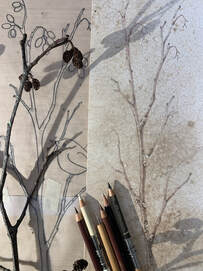
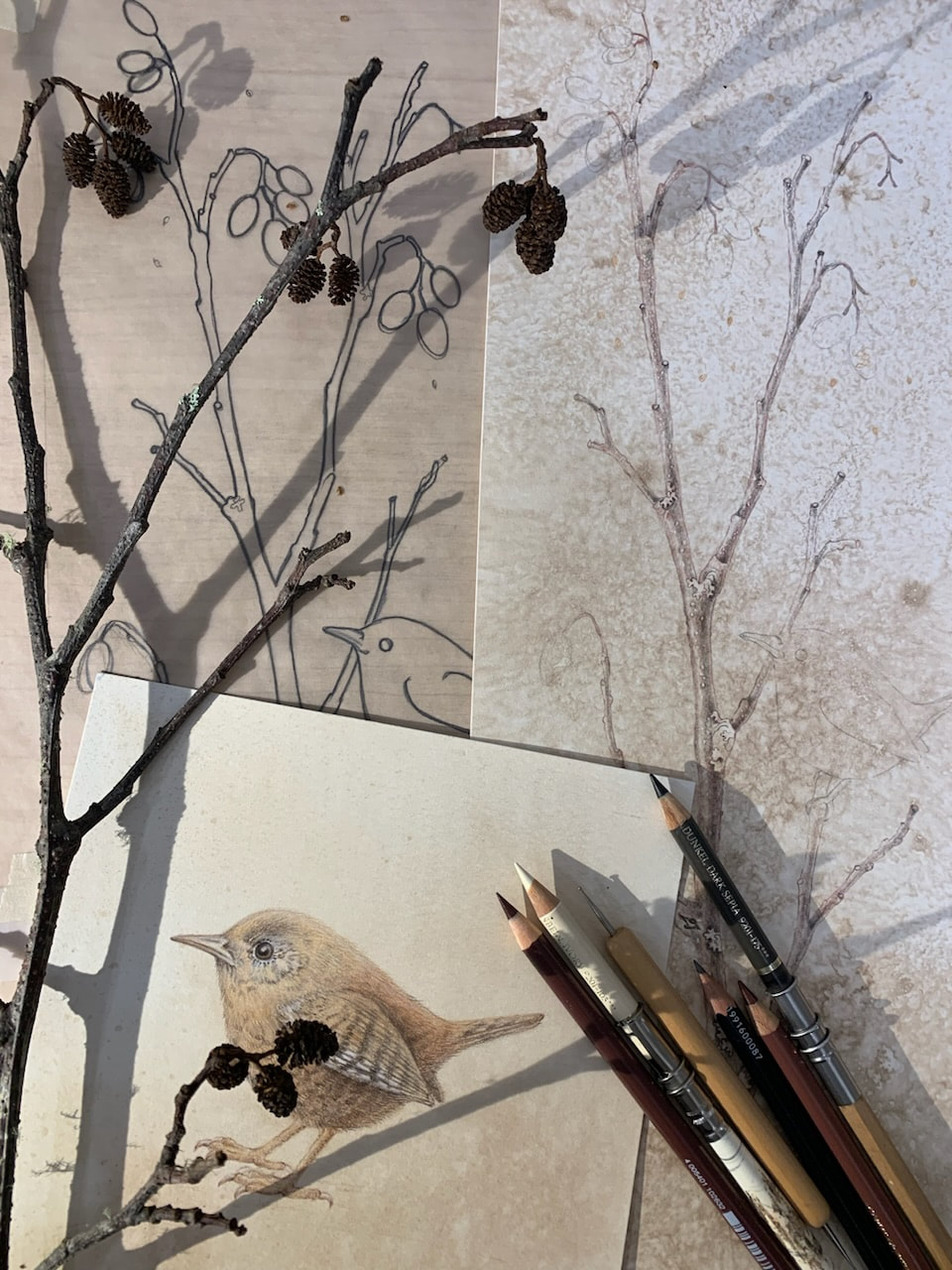
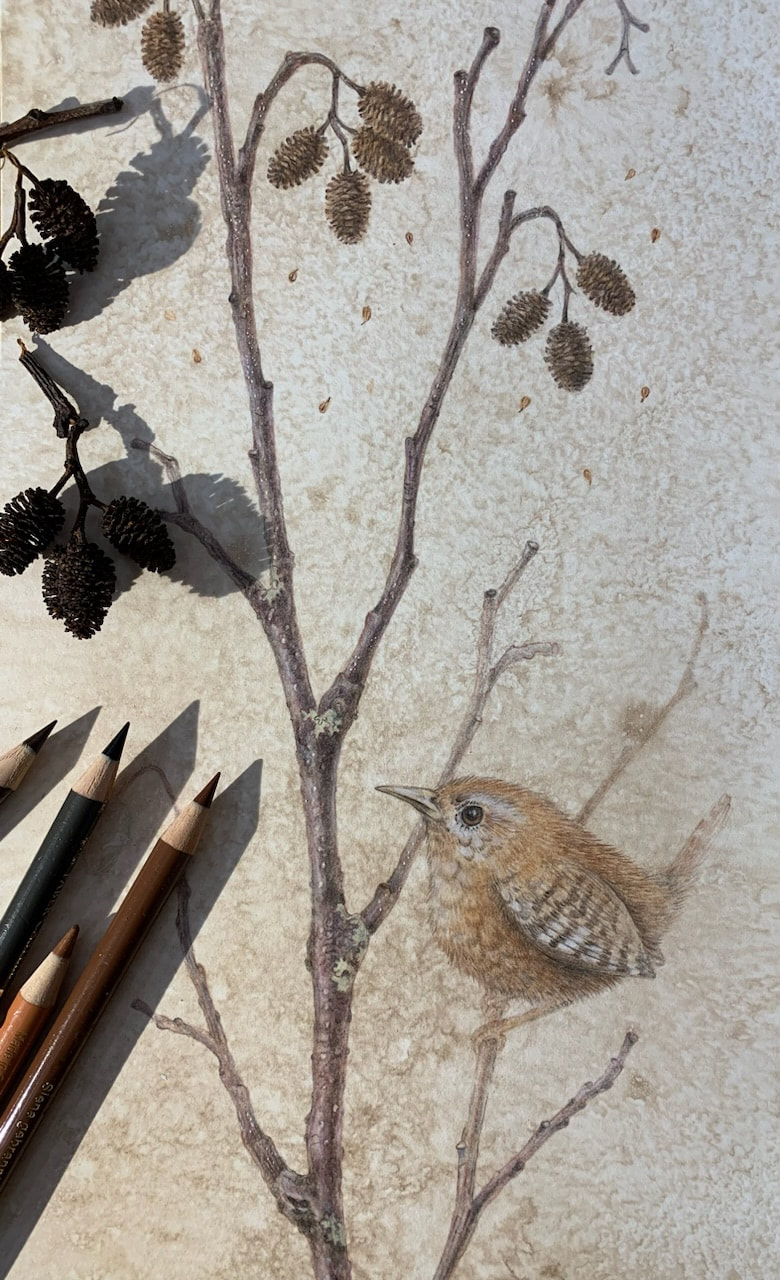
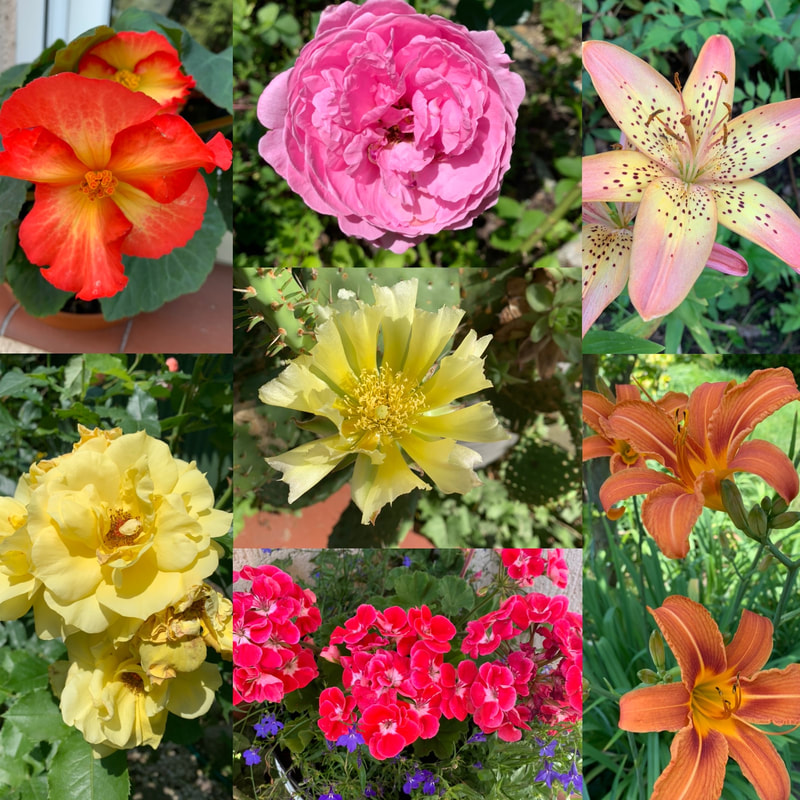
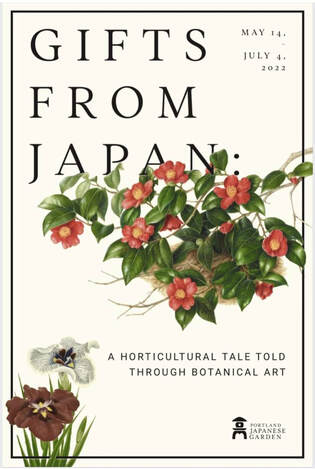
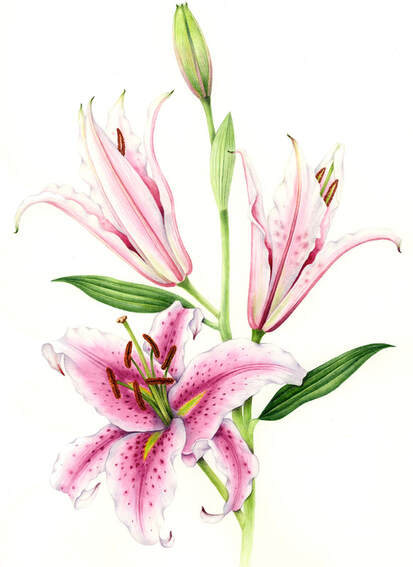
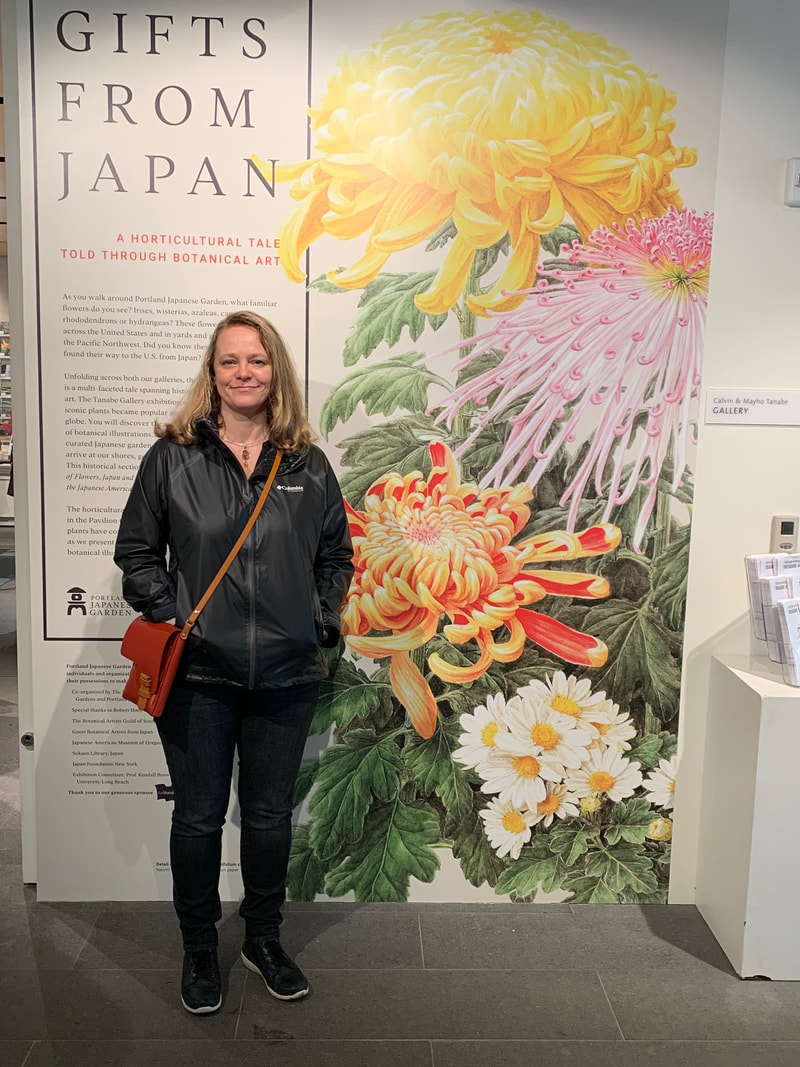
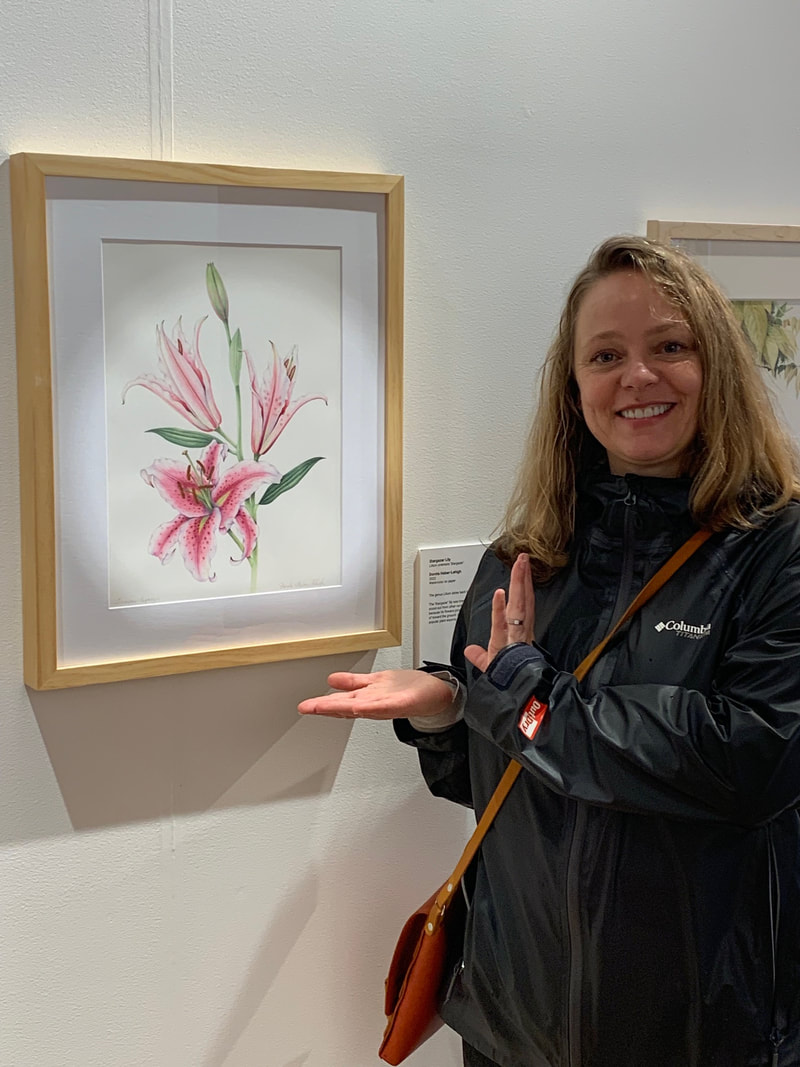
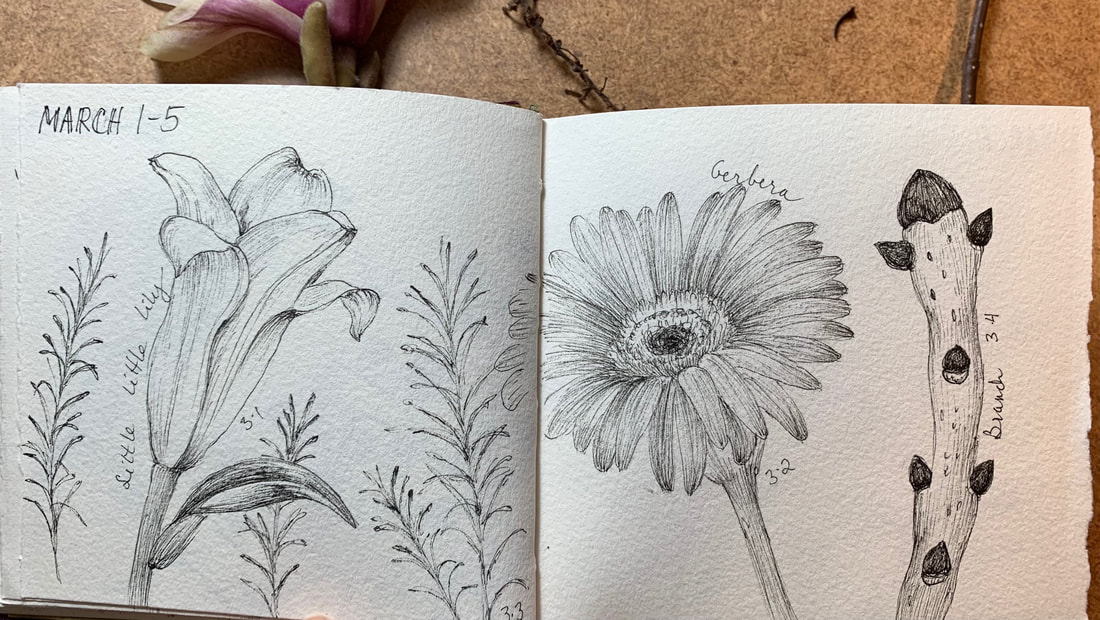
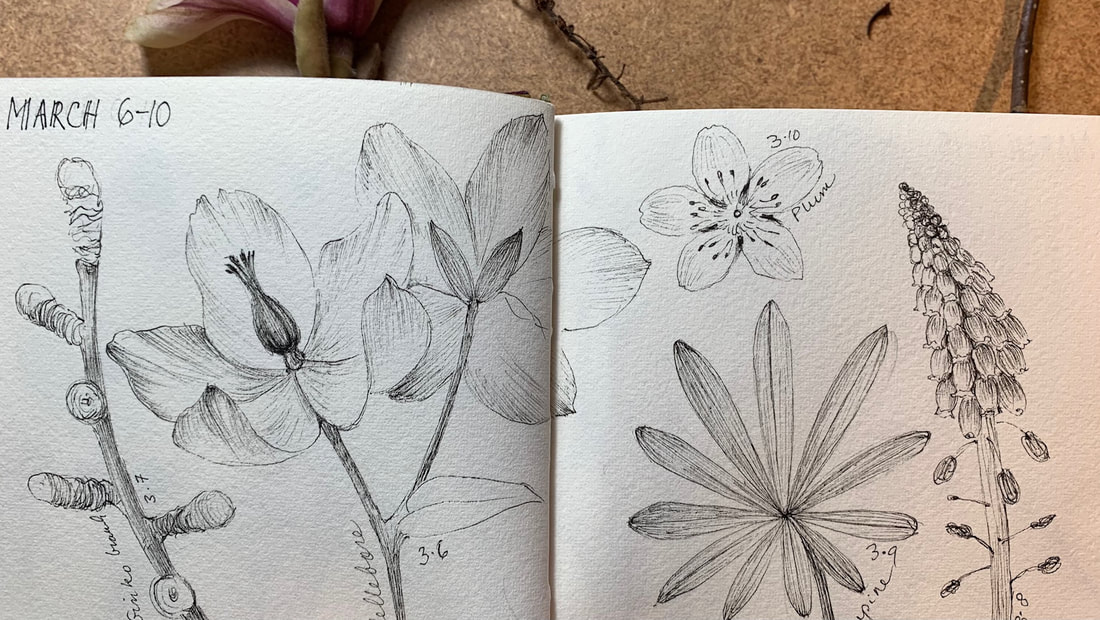
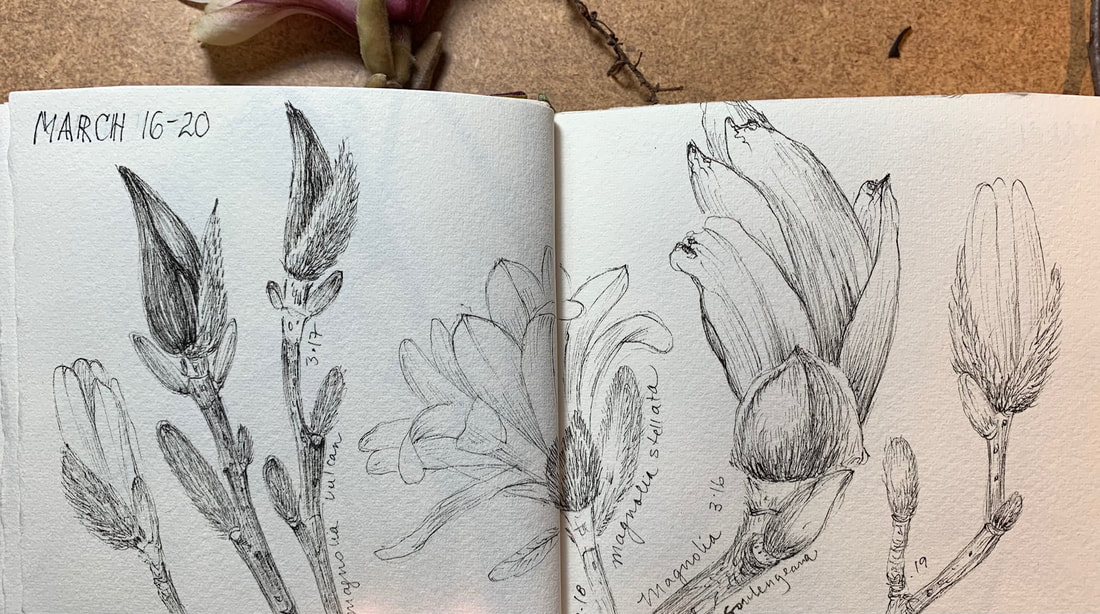
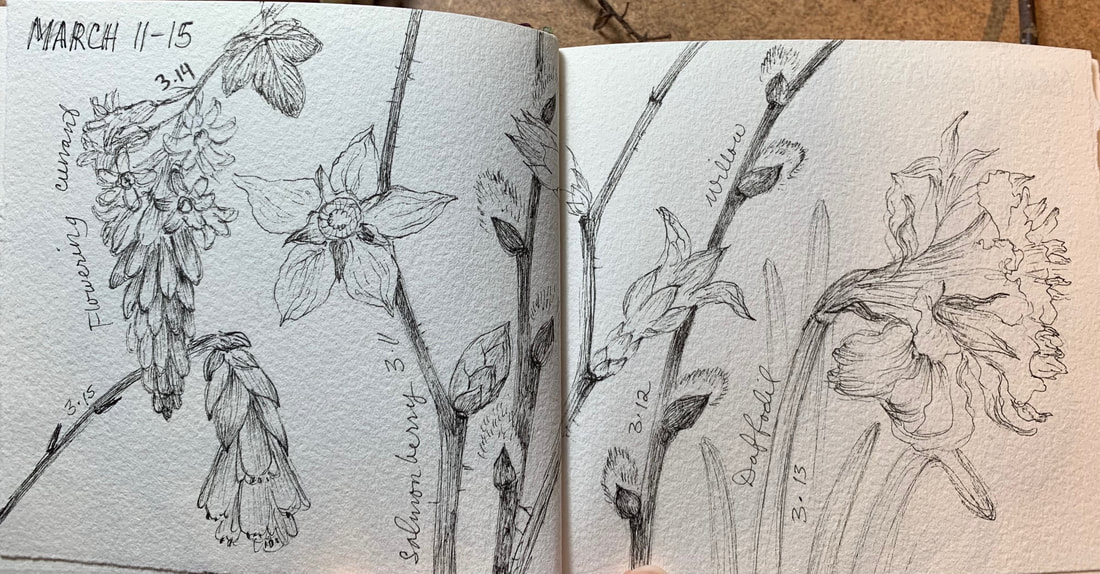
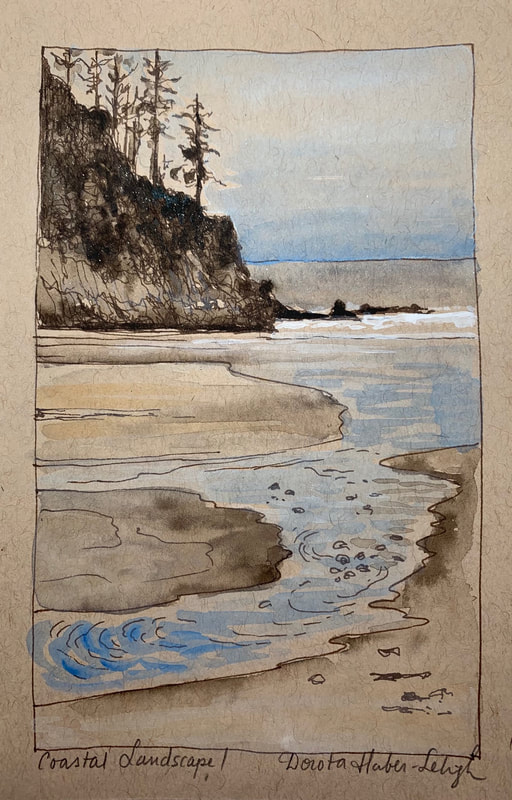
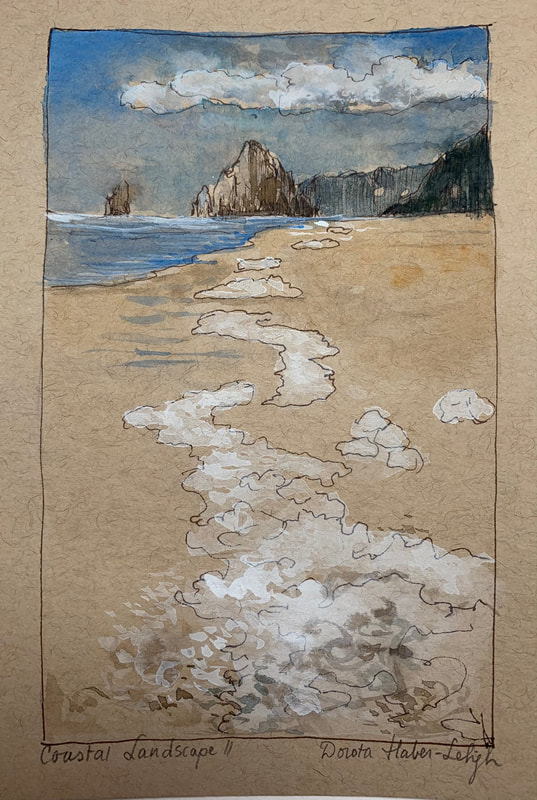
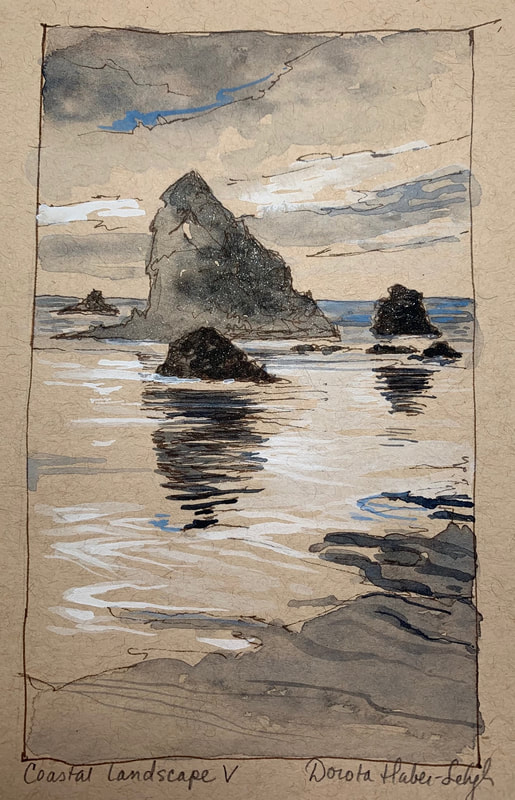
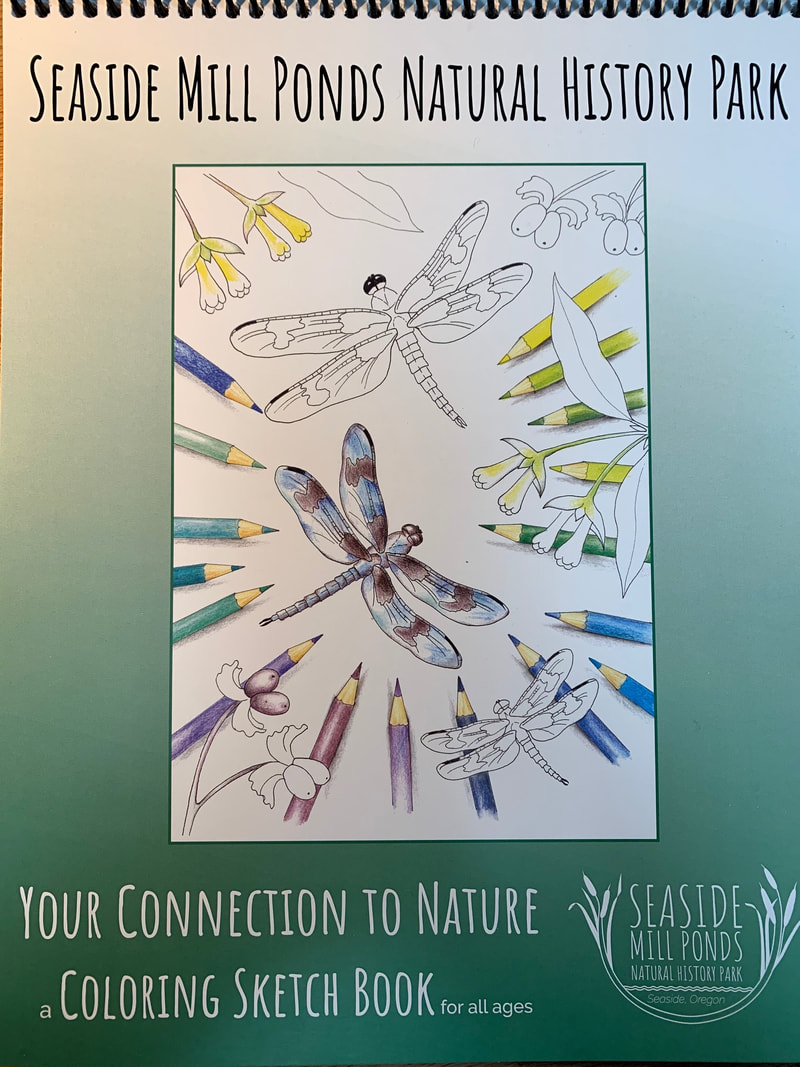
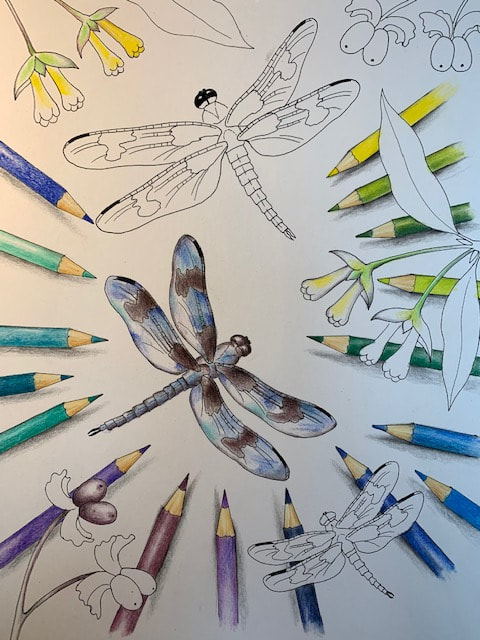
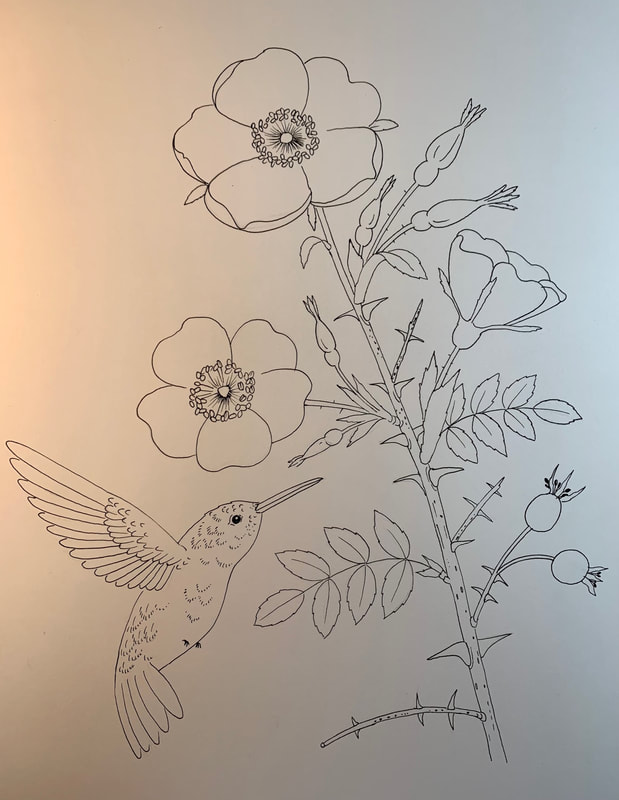
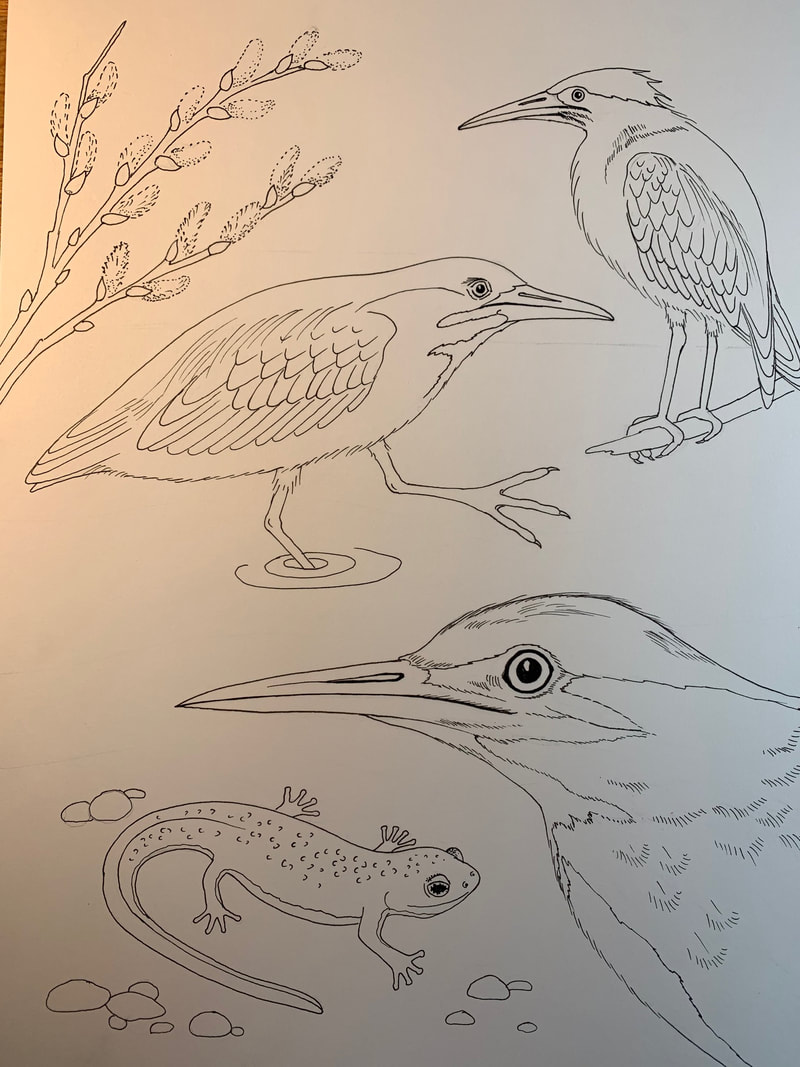
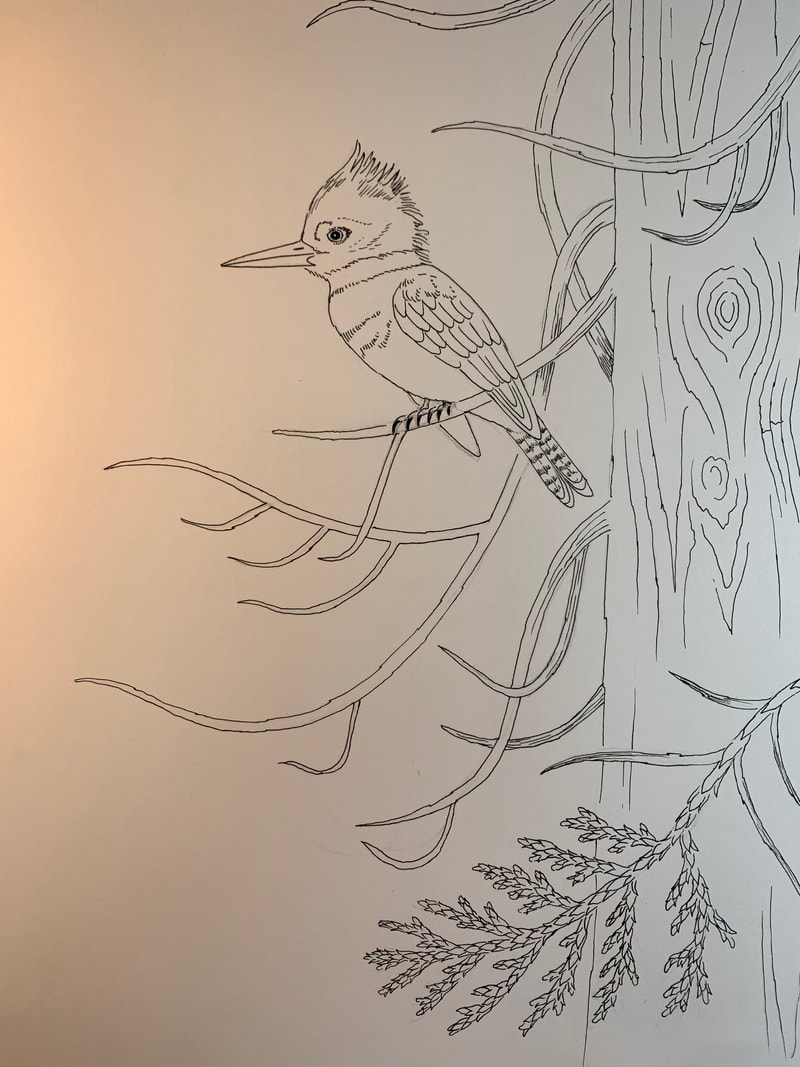
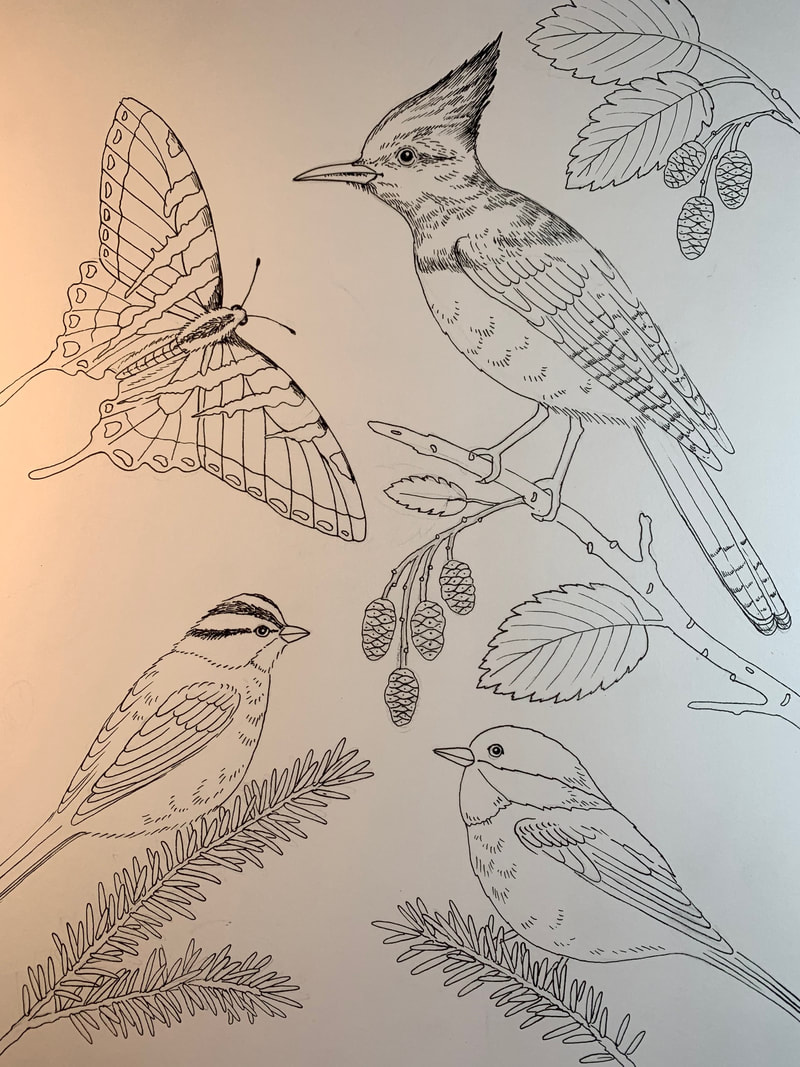

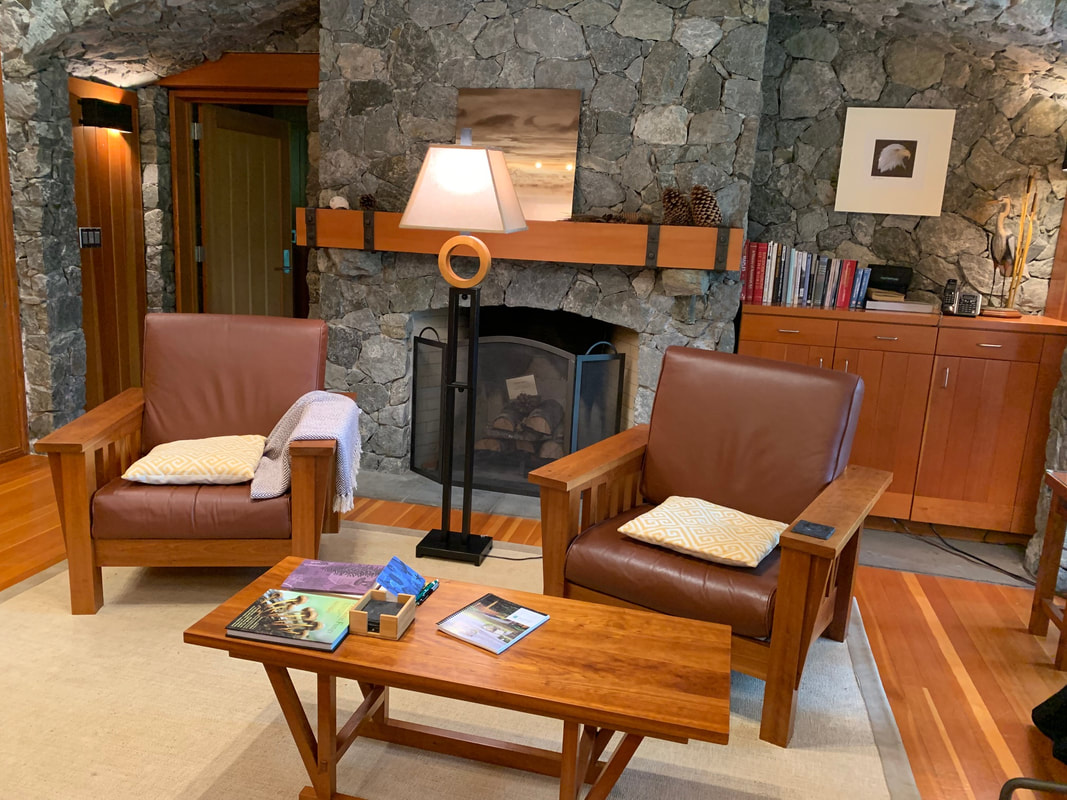
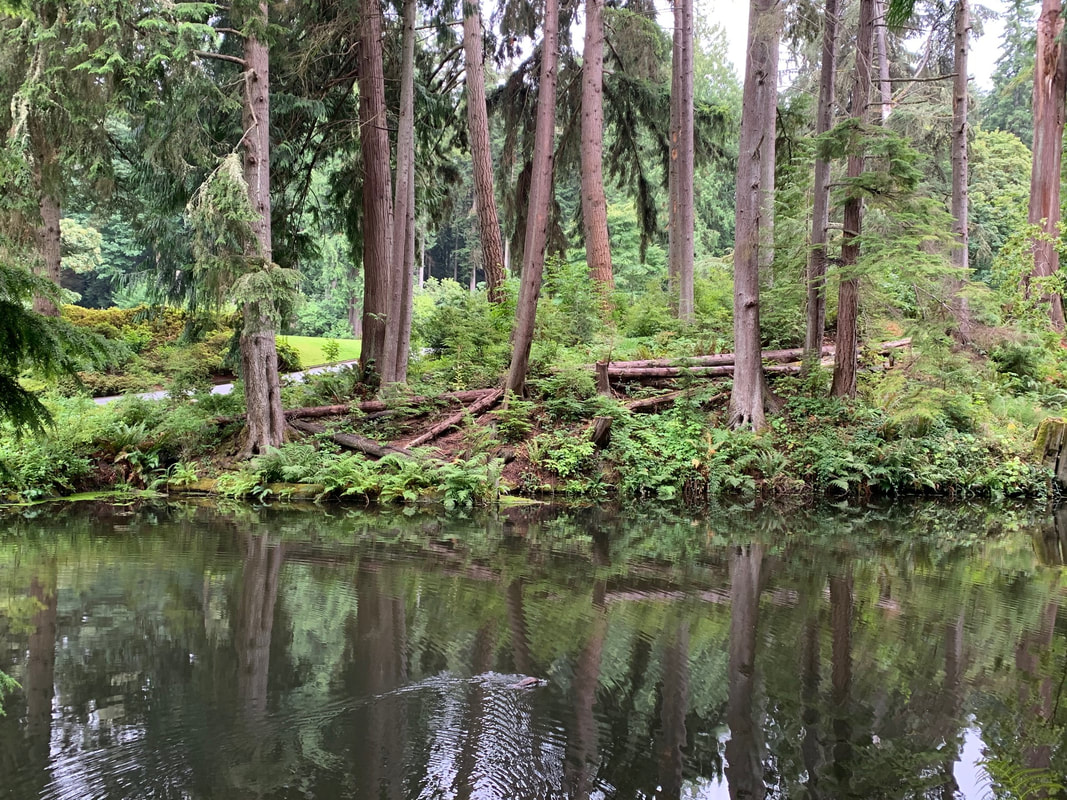
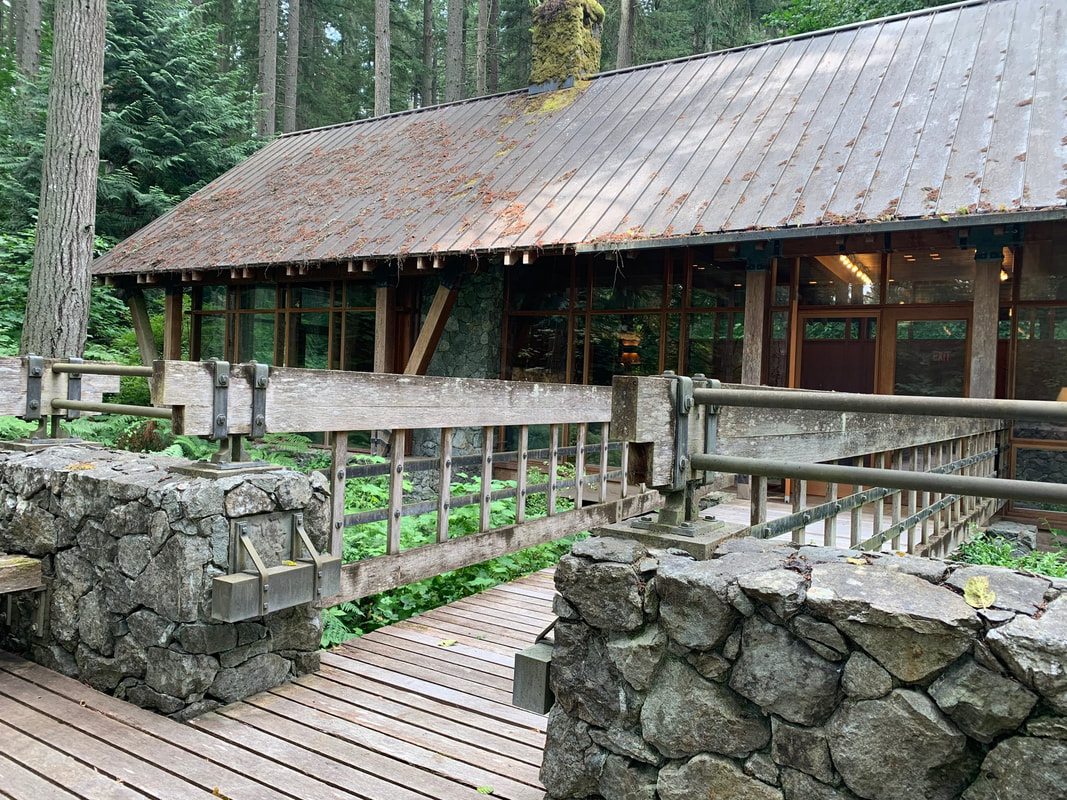
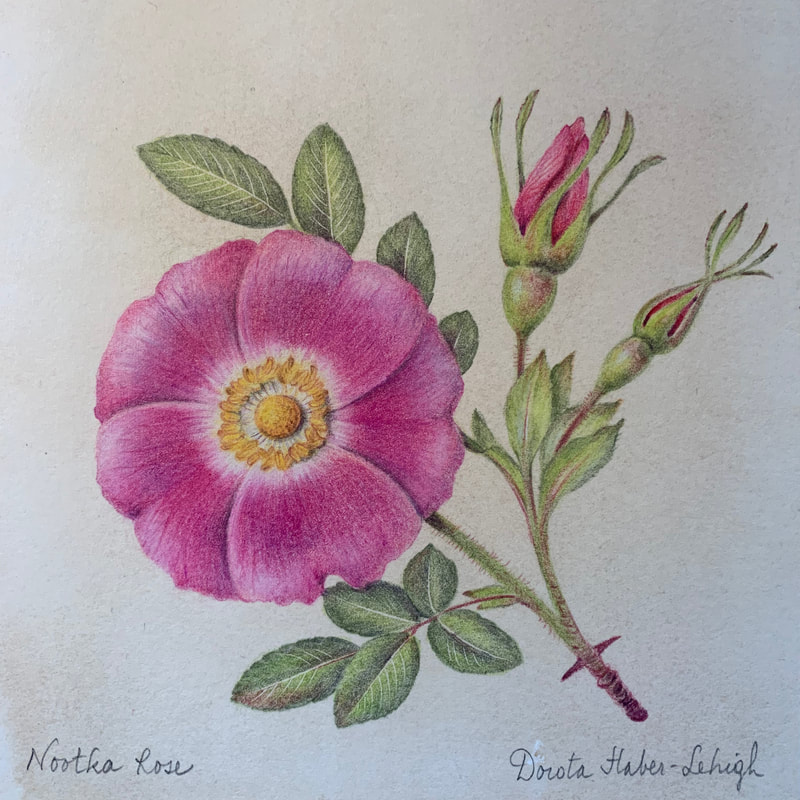
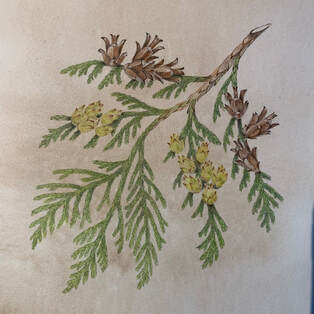
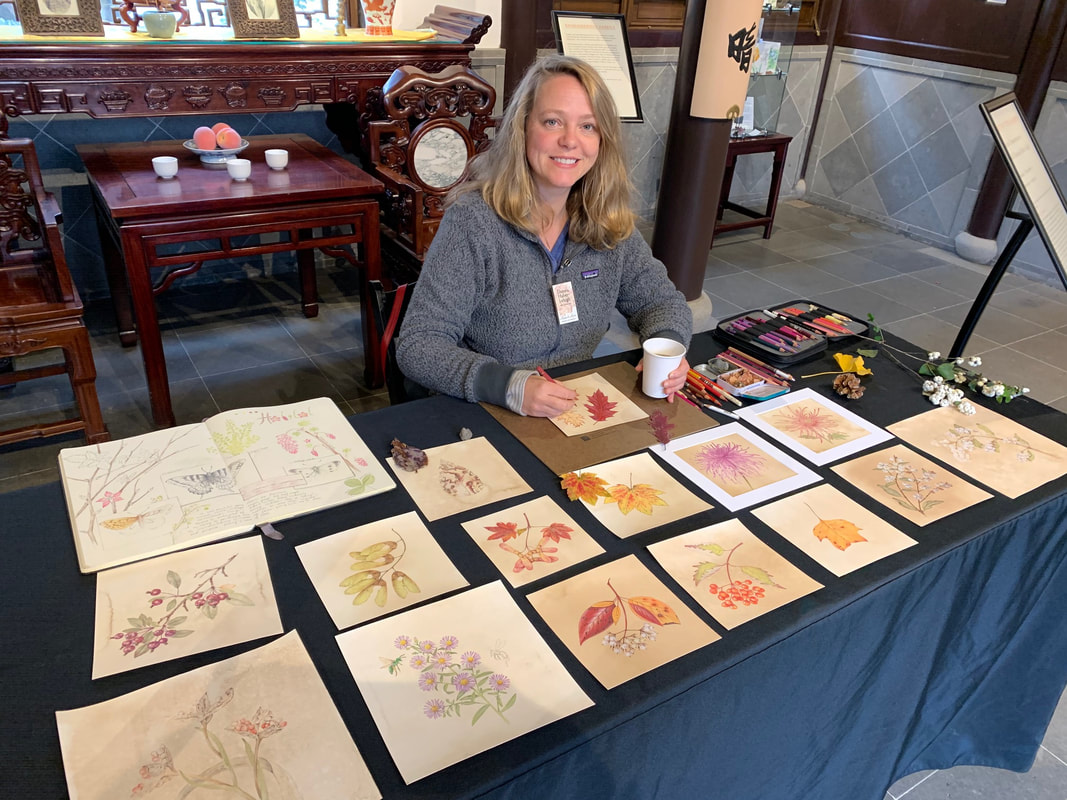
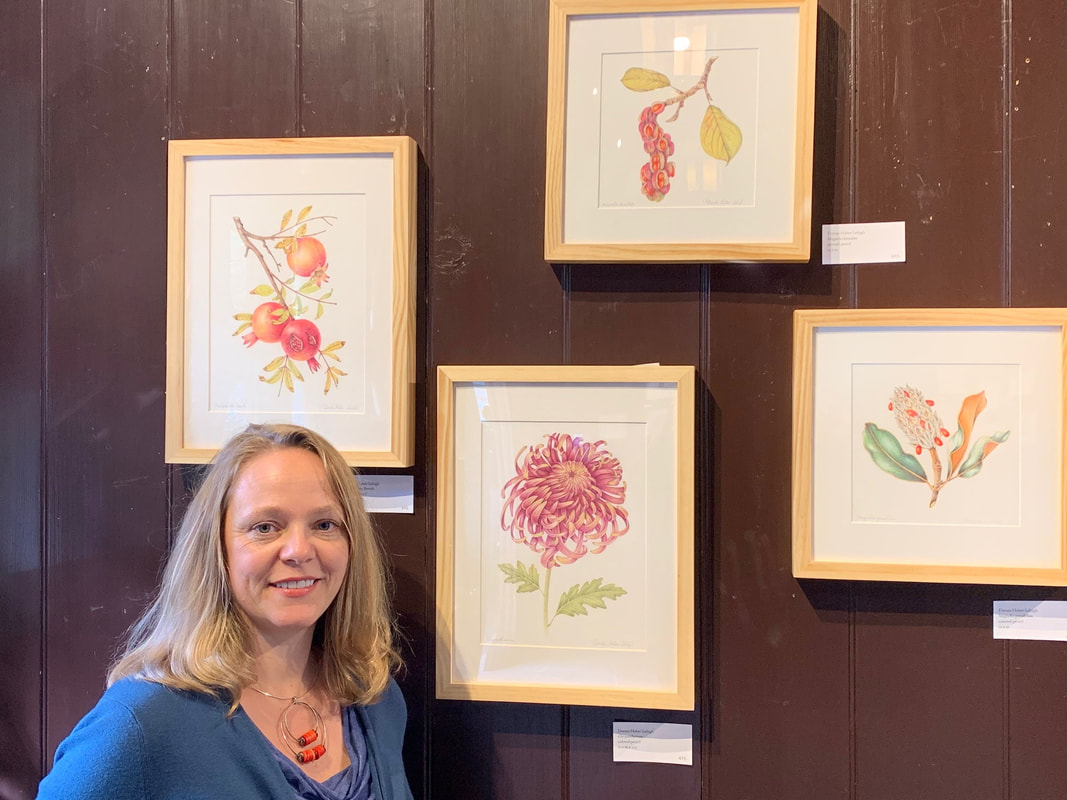
 RSS Feed
RSS Feed